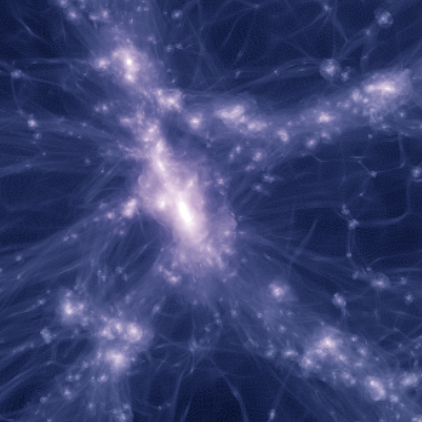Deep Learning Seminar Notes
Introduction
- Seymour Papert 1966 Summer Vision Project – goal was object identification
- Rules for everyday problems are difficult to write down.
-
Talks are extremely difficult.
-
Machine learning applications – machine translation – face recognition – road hazard detection – syntax parsing – object detection – image recognition
-
Vision – Imagenet – Imagenet: A large-scale hierarchical image database – J Deng et al. (2009), from Stanford – academic competition focused on prediction 1000 object classes (1.2M images)
- imagenet 2010 – SVM
- imagenet 20911 – SVM
-
Imagenet 2012 – university of toronoto deep convolutional neural network (hinton?) – won by a large margin – every subsequent entry is a nn.
- fine grain classification, generalization, sensible errors – inception v3 architecture
Deep learning for vision
- alexnet, supervision
- Imagenet classification with deep convolutional neural networks
- Krizhevsky Sutskever Hinton 2012
- multilayer perceptron trained with back propagation known since the 1980s
- backpropagation applied to handwritten zip code
- winning network contained 60 M parameters
-
achieving scale in compute and data is critical – large academic data sets – SIMD hardward (GPUs, SSE instruction sets)
- untangling invariant object recognition DiCarlo and Cox (2007)
- Hierarchical composition of simple mathematical functions
-
loosely inspired by visual pathway of the brain
- neuron – perceptron is a toy model
- Rosenblatt 1958 perceptron
- weighted sum of inputs running through nonlinearity
-
one of the best is just a max (0,z)
- NN -> y = f(f(…))
-
output of network is a real-valued vectors
- Step 1: probabilistic – softmax function – normalize distribution
- Step 2: one-hot encoding. Correct distribution of 1
- KL divergence – cross entropy loss
- then compute derivatives of loss based on weights – gradient descent
- Back propagation
- Rumelhart, Hinton, Williams, McClelland et al. 1986
- Werbos (1974)
- Deep networks operate on ~ 1M dimensions
- optimization is highly non-convex
- playground.tensorflow.org
image recognition
- LeCun, Bottou, Bengio, And Haffner (1998)
- http://yann.lecun.com/exdb/minst/
- Gradient based learning applied to document recognition
- number parameters for fully connected system – grows as pixels on side squared
- iphone camera would need 4 million layers for a single layer
- exploit symmetries
- translation, cropping, dilation, contrast, rotation, scale, brightness
- Ruderman and Bialek (1994) Statistics of natural images: scaling in the woods
- Simoncelli and Olshausen (2001) Natural image statistics and neural representation
- translation invariance -> convolution
- https://docs.gimp.org/en/plug-in-convmatrix.html
- Subsitute convolutional layer – model parameters roughly independent of the size of the image
- input and output depth are arbitrary parameters and not equal
- neural networks operate with depths up to 1024
- LeCun et al. 1989 – two convolutional layers
- Krizhevsky et al. 2012 – convolutions and fully connected layers
progress
- 2012 supervision 16.4% error
- karpathy 2014 5.1% (human)
- 2015 inception 3 – 3.6%
- 2015 resnet 1st 3.6%
- 2016 inception-resnet 3.1%
-
best models are of order a thousand layers
- szegedy et al. 2016
- he zhang ren sun 2015
- szegedy 2015
- ioff and szegedy 2015
- karpathy 2014
- simonyan and zisserman
- inception – parallel pathways with multiscale filters
advances in neural networks
- nonlinearities: example of batch normalization
- covariate shifts are problematic in machine learning
- blog.bigml.com
- covariate shifts must be mitigated through domain adaptation
- input and training and test data have different distributions
- how to you maintain – Ioffe and Szegedy 2015 – Batch Normalization: reduce internal covariate shifts
- Goodfellow et al. 2013
- normalize the activiations within a mini-batch
- learn the moments as a parameter of the network
- learn the mean and variance of each layer as parameters
- perceptron y = f(BatchNorm(\Sum w_i x_i))
- stabalize hidden layer activations
- CNNs train faster with fewer data samples
- employ faster learning rates and less network regularizations
- understanding: example of gradient propagation
- for training a network – focused on claculating gradients on parameters
- but how does objectives change based on images
- weight vs. image space
- which pixels elicit a large activation values within a layer?
- Zeiler and Fergus (@013) – Visualizing and Understanding Convolutional Networks
- http://mscoco.org
- what happens if we distort the image
- what if we used the wrong image
- Mordvintsev Olah and Tyka (2015) – Inceptionism: Going Deeper into Neural Networks
- What pixels distort and image into the “dog”
- http://googleresearch.blogspot.com/2015/06/inceptionism-going-deeper-into-neural.html
- A Neural Algorithm of Artistic Style – Gatys, Ecker, Bethge (2015)
- https://github.com/kaishengtai/neuralart
- Goodfellow, Shlens, And Szegedy (2015) – explaining and harnessing adversarial examples
- Szegedy et al. (2014) – intriguing properties of neural networks
- add images to see what can fool the network
- robust across trained networks, architectures, and other machine learnings
- network operates in different perceptual space
Conclusions
- cs231n.github.io/convolutional-networks/
- www.tensoflow.org
- g.co/brainresidency
- Applicants in all areas
